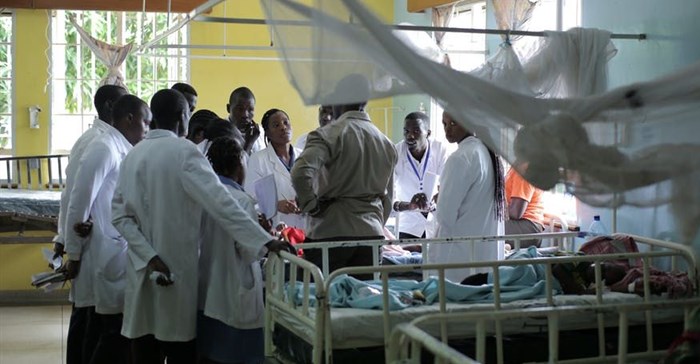






They include clinical officers, health officers, medical assistants, técnicos de medicina (medical technicians) and técnicos de cirugia (surgical technicians, and clinical associates. Nurse practitioners or primary healthcare nurses, who take on tasks such as making diagnoses, initiating treatment or performing anaesthesia, are also considered mid-level health workers.
Mid-level health workers were introduced in Africa in the mid-20th century to address doctor shortages during the colonial and post-colonial periods. These training programmes were based on the medical model of education at that time.
The United States started training mid-level medical workers in the 1960s to deal with the shortage of physicians in primary healthcare. Similar programmes have now been established in Europe, Australia and Canada.
In sub-Saharan Africa, mid-level health workers exist in 25 out 47 countries. They have a valuable role to play, but aren’t always given the credit they deserve – or sufficiently trained and supported, as our review of the training and curricula for mid-level health workers in Kenya, Nigeria, South Africa and Uganda found.
Our review showed that the training programmes were similar across the four countries. Mid-level health workers wanted their training to be more aligned to the challenges they faced everyday. They further wanted to be better equipped to deal with emerging diseases.
Most countries find it difficult to persuade highly trained health workers to stay in rural areas because of poor living conditions. Mid-level health workers are more likely to be retained in such communities.
Training courses for midl-evel health workers are shorter than those for more advanced professionals. This means they can be deployed more quickly than highly trained doctors. They are also less dependent on expensive technology to make diagnoses and decide on treatment. This is because they are trained to follow standard guidelines in their practice, in resource-limited settings, and to refer more difficult problems on to doctors. But some African countries don’t include mid-level health workers in health workforce planning. Where they are available, their funding and training is often limited.
Mid-level health workers carry out diagnostic and treatment functions traditionally thought of as the responsibility of doctors. This allows doctors to focus on more complex cases.
Mid-level health workers continue to play a key role in African countries. But their training programmes have failed to keep up with the times.
There have been several calls to review and update these programmes to ensure that these workers have the competencies necessary to make a significant impact in addressing twenty-first century needs. These include HIV and Aids, chronic illnesses, and other problems of lifestyle, accidents and trauma.
Clinical officers provide a wide range of primary and community hospital level services in Uganda and Kenya, where they are long established mid-level health workers. The first training started in Kenya in 1928.
In Nigeria, community health officers and community health extension workers are responsible for most primary care service delivery. In South Africa, the training of clinical associates started in 2008 with a focus on working with doctors in district hospitals. Their numbers are still small because of a lack of funding and leadership from the national health department.
We found that the training programmes across the four countries had much in common. They all focused on basic diagnosis and medical treatment.
Older programmes tended to be more didactic in their approach and were often lacking in resources. There were concerns about skills gaps and the quality of training, but most mid-level health workers that we interviewed felt their basic training was adequate for the work they do.
Mid-level health workers and their managers indicated that training methods needed updating to include additional skills relating to the common diseases they encounter. These diseases varied across countries and included health problems of mothers and children, and infectious diseases such as tuberculosis. These workers also wanted their training to include more problem-solving approaches and practical procedures that could be life-saving.
In Kenya, Nigeria and Uganda mid-level health workers have been working for a long time. They’re seen as essential frontline workers in health services, and not just a stop-gap. But there are significant deficiencies in training programme content and educational methodologies in these countries, such as didactic teaching methods, out-of-date trainers and supervisors, poor training facilities, lack of hands-on clinical practice during training, and lack of alignment to health care priorities.
In South Africa, clinical associates appear to have benefited from their more recent origin. Their training programmes are aligned to current thinking in medical education, such as early contact with patients, service-based and team learning, integrated approaches, evidence based reasoning, quality improvement and reflection on practice.
Mid-level health worker training programmes in Africa offer an important avenue for scaling up human resources. Such programmes can produce clinicians who are able to provide diagnostic and therapeutic services with lower entry qualification requirements and shorter training periods than doctors. This makes them more cost-effective.
Increasing mid-level health workers’ contribution to health care requires significant new investments in their training, including trainers and facilities.
The World Health Organisation has called for the transformation and scaling up of health professionals’ education through greater alignment between training institutions and health systems. This includes adapting curricula to evolving healthcare needs. This means that education systems must continuously review and adapt programmes to ensure they meet the needs of the populations their graduates serve.
This article is republished from The Conversation under a Creative Commons license. Read the original article.![]()

The Conversation Africa is an independent source of news and views from the academic and research community. Its aim is to promote better understanding of current affairs and complex issues, and allow for a better quality of public discourse and conversation.
Go to: https://theconversation.com/africa